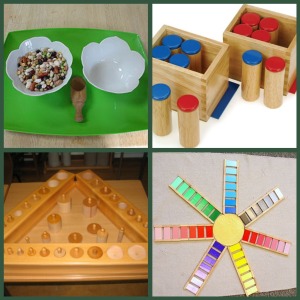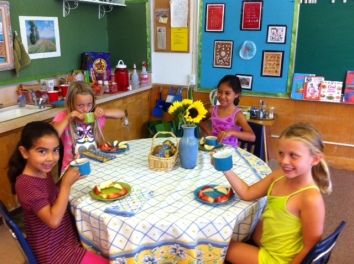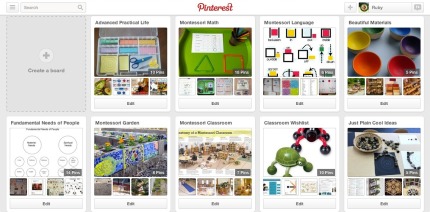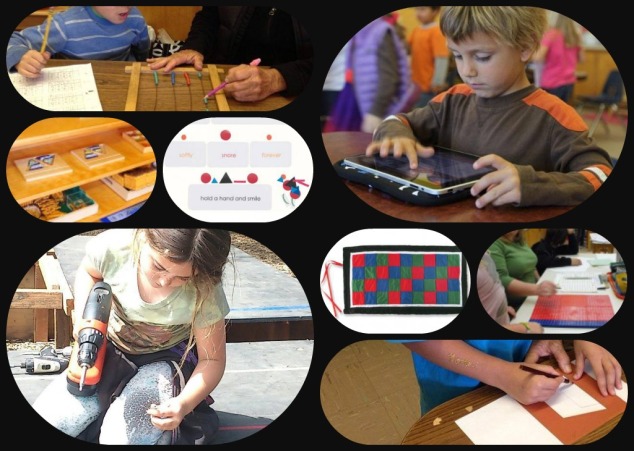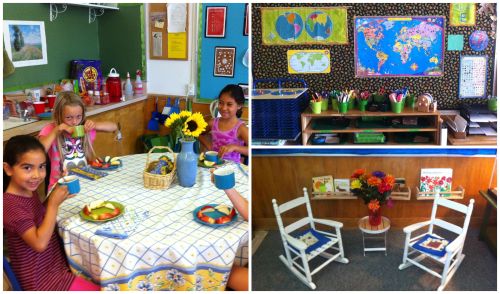
Scenes from Montessori Classrooms
Last week, I introduced The Absorbent Teacher and explained a little bit about what the term means to me. This week I thought I’d talk about another important aspect of the Montessori Method: The Classroom. Montessori classrooms are unique in many ways and, within each age group, there’s plenty of variation. Enough for me to split the subject into two posts. Today I’m tackling the commonalities across all Montessori classrooms; later in the week, I’ll get into some specifics of the specifics unique to Elementary and Middle School rooms.
One thing all Montessori classrooms strive for is a “Prepared Environment.” That is, we teachers design our classrooms so they’re suited to the children’s needs. The tables and chairs are child-sized. The work on the shelves is age-appropriate and neatly ordered. The material is realistic and made to fit in the children’s hands. This idea of a prepared environment–one that is both safe and age-appropriate–allows the children to move freely about the room. To some people, Montessori classrooms look chaotic. To Montessorians, the structured environment is what allows children to develop autonomy and self-discipline.
So what is the structure of a Montessori classroom? Good question! I mentioned that the work on the shelves is age-appropriate. Material is also grouped by subject and, usually, by shelf. This way, the children know which area of the classroom to visit when they’re looking for math, language, geography, sensorial or practical life work. For younger, preschool-age children, the emphasis is on sensorial and practical life. (Sensorial work focuses on developing the five senses: touch, taste, sight, sound and smell. Practical life work is just that: work to develop skills you use every day, like pouring, bow-tying or table-washing.) If you’ve visited an Early Childhood classroom at a Montessori school, you’re probably familiar with a few of these materials:
Another thing you’ll notice about the Montessori classroom is that the teacher is not the focal point. The teachers may have large, communal desks where they can work with students individually or in small groups, but they do not sit or stand at the front of the room. Students also have choices about where, when and how they do different works. If the child is more comfortable completing his work by standing, then by all means he should be allowed to do so. If he’s motivated by beginning the day with an inset, then that might just be the thing to get him started.
Mixed ages are also an integral part of the Montessori classroom. Allowing the older children a chance to mentor the younger students is important. It fosters learning and independence. It’s equally important that younger children have the chance to observe their older peers. Young children learn a lot by observing and experimenting, both of which are maximized by mixed age classrooms.
I couldn’t possibly cover every characteristic that makes up a Montessori classroom, but I tried to touch on those I consider essential. I’d love to hear from other Montessorians, especially any who think I missed anything crucial. In the meantime, please check back later this week for more on the Montessori classroom!
Note: This is a repost from

